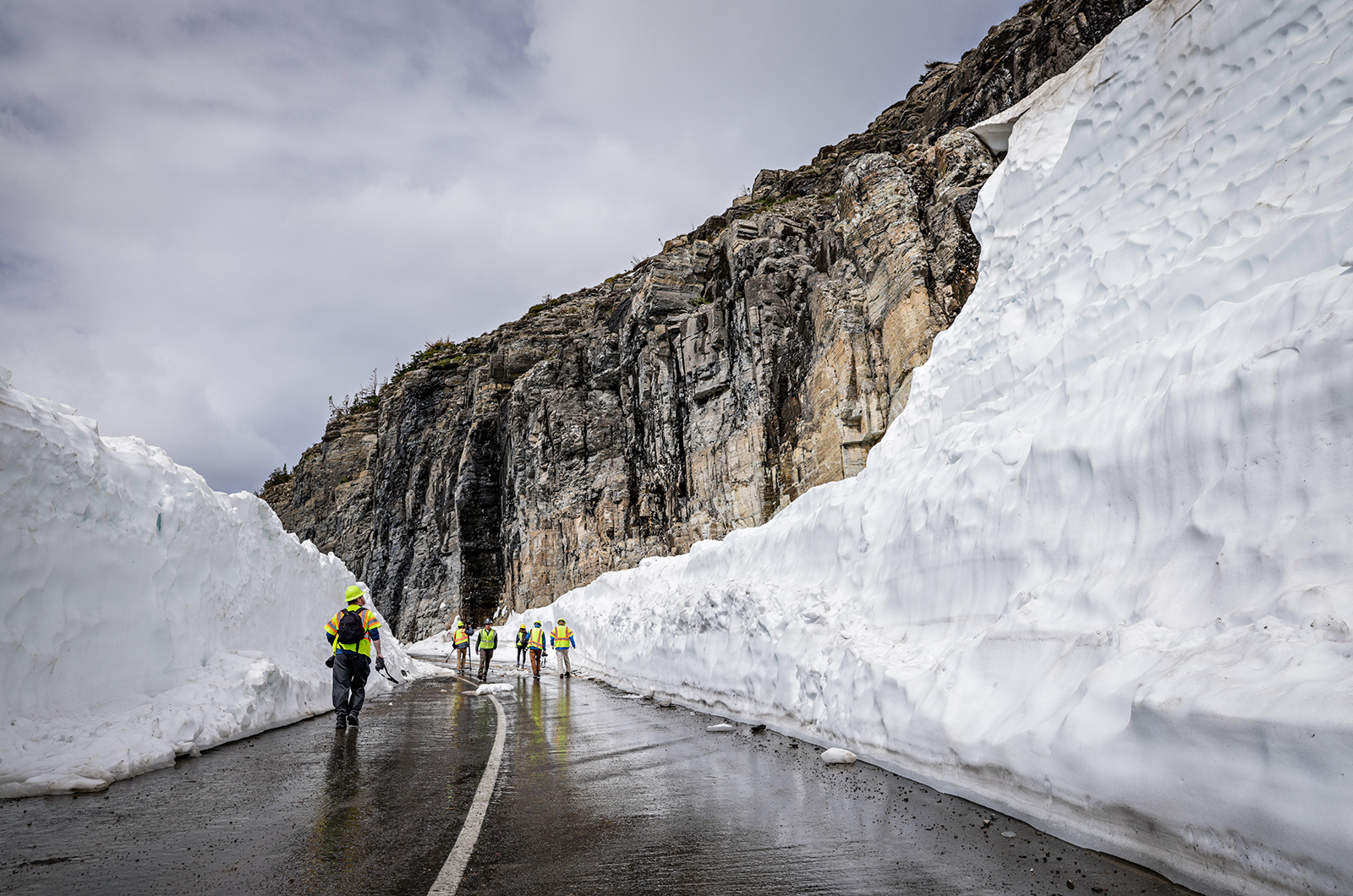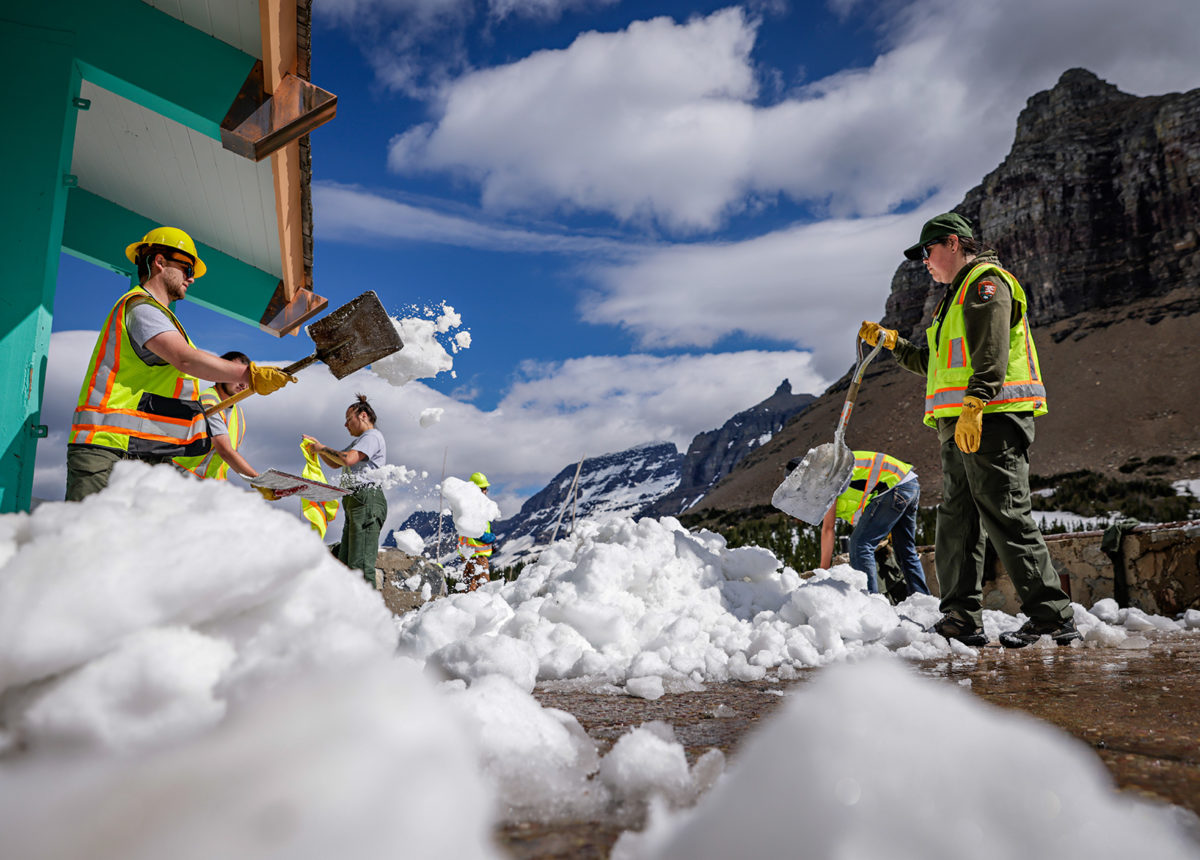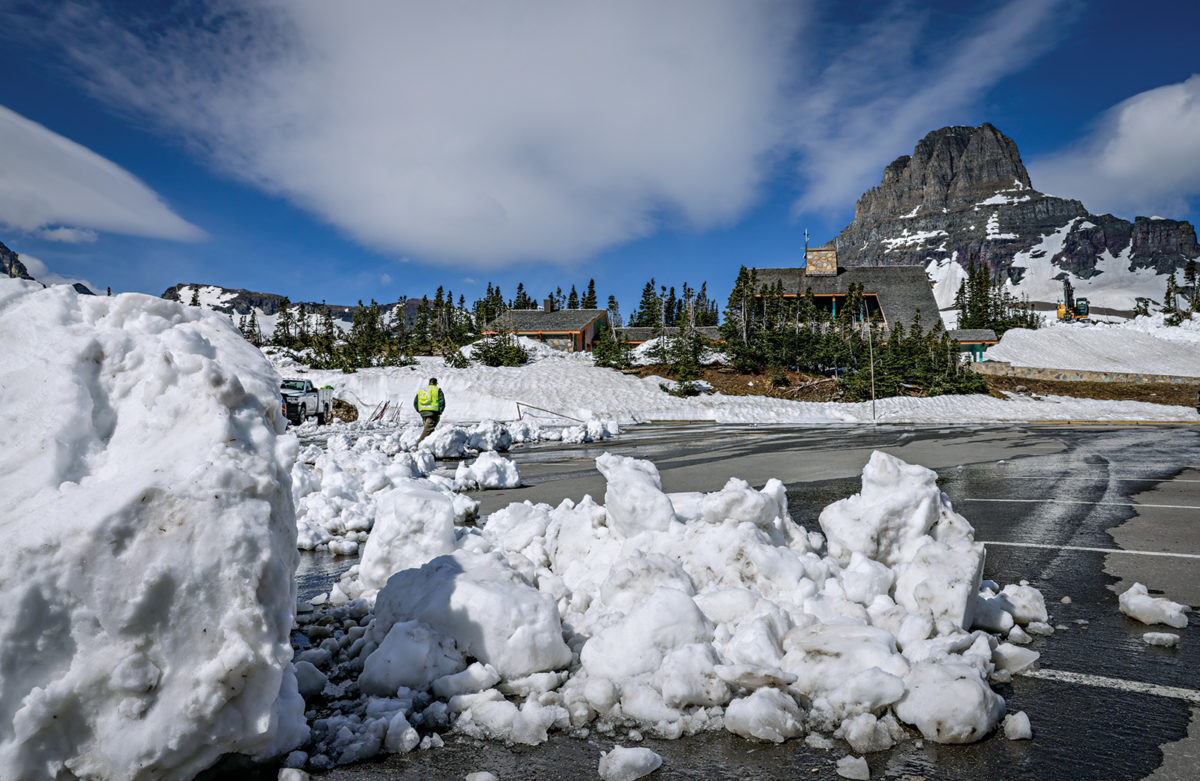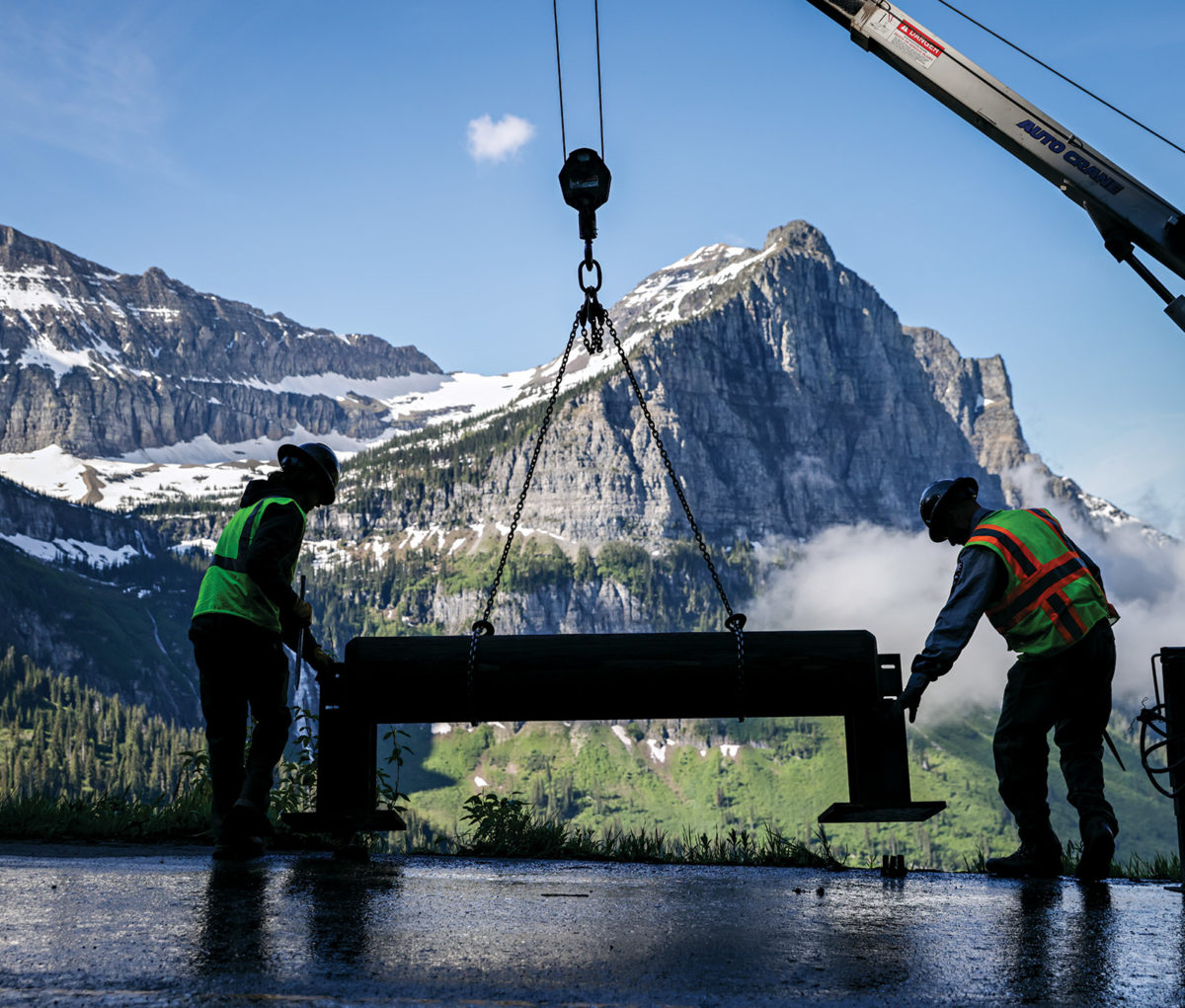
Crews Continue to Clear Snow as Glacier’s Sun Road Prepares for Delayed Opening
Unseasonably late weather patterns and heavy snowfall have pushed GTSR’s opening past July 4 for the fifth time in park history
Snowplow crews continue to clear the Going-to-the-Sun Road as Glacier National Park prepares for the road’s latest opening in park history. Excavators have begun plowing snow just beyond Logan Pass, marking the achievement of a major landmark in road clearance, yet considerable work lies ahead as guardrails must be installed and rocks dispersed. Officials say that GTSR will be passable no earlier than July 13 and several variables could delay the process even further into the summer. While snow clearing teams and weather specialists expect that visitors will be able to traverse the full road this season, they remain cautious and urge park goers to be prepared for a late start.
Currently, cars are permitted on the Sun Road up to Avalanche Campground on the west side and Jackson Glacier Overlook on the east side. Hikers and bikers are allowed to travel past these stopping points, though the extent to which foot and bike traffic is permitted on GTSR is based on changing avalanche hazard assessments, which are updated by the park every Thursday. Glacier officials urge visitors to check the park’s website for updated information on these guidelines and to abide by regulations to avoid danger and federal penalties.

GTSR’s opening up to Logan Pass has only been postponed past the Fourth of July a handful of times. The road was opened on July 15 in 1933, the year its construction was completed; on July 10, 1943 due to labor shortages in the wake of the Second World War; and on July 13, 2011 after an unseasonably long stretch of winter weather. During the summer of 2020, the road opened to Logan Pass on July 13, but its eastern segment from Rising Sun to the St. Mary entrance station remained closed for the entire summer due to the COVID-19 pandemic. It was the first time in park history that a segment of the road remained closed for the entire season.
Now, “The challenge is mainly the weather,” Glacier Road Supervisor Brian Paul said. This year, cooler temperatures and heavy precipitation persisted through the spring in Glacier, leading to delayed seasonal weather patterns and a lingering snowpack.
“It never warmed up. It stayed cold,” West Side Road Crew LeadChristian Tranel said. “The normal amount of snow that would have melted never melted.”

Enduring snow levels made the annual task of clearance particularly trying for Tranel’s team. Even as snow excavators saw progress, late spring storms and recurrent avalanches frequently reversed gains, which “kind of beat up the crews,” Paul said. On June 17, the park saw 1.5 to 2 feet of snow, an abnormal event that unraveled road crews’ progress. “Much of this new snow is expected to avalanche over the next few days due to the dramatic warm-up and sunshine, with large amounts of avalanche debris being deposited on the road between Road Camp and Siyeh Bend. This late storm delayed progress on clearing GTSR,” park communicators wrote on Facebook after the storm.
While rising temperatures in late June and early July have mostly staved off new snowfall, they have also made avalanche risk more dire. Warm weather can trigger melting ice, leading to potentially dangerous and unpredictable avalanches and rockslides. Last year, a late-spring avalanche trapped a group of bikers who were traversing the Sun Road, requiring an emergency rescue mission to free two of the bikers near Triple Arches. Paul says that even after snowfalls halted in mid-June of this year, road crews could not restart plowing until the possibility of such avalanches was deemed low.

The U.S. Geological Survey partners with the park to forecast avalanche risk. Zachary Miller, a physical scientist with the USGS, has worked on avalanche forecasting at Glacier since 2017. Miller monitors five remote weather stations around the park every day, helping park officials navigate hazards as they continue clearing GTSR. He encourages park visitors to be aware of avalanche danger, especially as they traverse into snowier parts of the park.
“Keep safe and avoid steep, snowy slopes,” he cautioned park-goers, calling the avalanches “pretty powerful” forces.
Glacier officials say they understand the exasperation of visitors unable to traverse the full Sun Road. Many tourists have rearranged long-set travel itineraries due to the road’s unexpectedly late opening. “I know it’s frustrating. People plan their trips way ahead of time,” Paul said.
Paul and others emphasize that road crews are doing all that they can to make the road safe and passable for the 2022 season. “My guys have been working for the past two weeks, three weeks. They’ve been putting in 50 hours a week,” Paul said.
“It’s pretty incredible what the road crew works through to get this road open,” Miller added.

Despite ongoing weather-induced setbacks and frustrations, Paul says the view from Logan Pass remains striking as ever. “That’s the best part of being out here. You get to watch the park come alive,” he said. “It’s great.”
As road crews continue to clear snow past Logan Pass, Paul and his team remain hopeful that visitors will be able to experience the exquisite view themselves in the coming weeks.